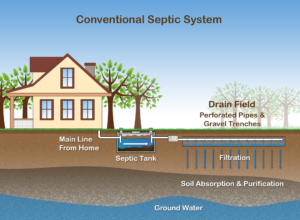Before starting an article, use a keyword research tool to determine the volume of searches for the topic you are writing about. This will help you select relevant keywords to target in your article.
The best practices for SEO are based on the idea that search engines want to display the most useful results for each query. This is why RankBrain has become an important ranking factor. Contact Rank Boss now!

Keywords are a critical part of SEO, and help search engines understand the context and content of your website. They are also a way to communicate with your audience and make sure that the content you create addresses their needs. However, the way that keywords are used in SEO has changed over the years.
Keyword research reveals a wealth of information about your competitors and what your audience is searching for. It’s important to start with high-level concepts, and then drill down into more specific terms. For example, “tile” is a broad term, but “affordable tile,” “quality tile,” and “installing tile” are more targeted terms that will allow you to narrow your focus and rank more effectively for those searches.
Once you’ve nailed down your keywords, it’s time to create relevant content that answers those queries. You can find inspiration by looking at competitor websites, conducting market surveys, or engaging with potential customers on social media. You can also use free tools to help you with your research, such as Google’s Keyword Planner. However, you should be wary of using these tools to identify exact phrases that your customers are searching for. Google often groups together search volumes for closely related terms, and it isn’t always clear why some words get grouped together and others are not.
A well-researched keyword list is crucial to your SEO strategy. Not only do they increase your chances of ranking for a particular search, but they also help you attract the right type of traffic to your website. The right kind of traffic is one that will likely convert, which means that you’ll be getting new customers and increasing your ROI.
The keywords you choose should be relevant to your business and the needs of your target audience. For example, if you’re a building materials manufacturer, your keyword research should focus on the types of construction projects your target audience is undertaking. Your content should explain how your products can help them achieve their goal.
When choosing keywords, keep in mind that search intent is more important than ever. For example, a user who searches for “How do I train my Alaskan Malamute?” may be a more qualified lead than someone who just types “dog training.” This is because the first searcher has already done some research and knows what type of dog they want to train.
Metadata
Metadata is a key element of search engine optimization that helps the crawlers understand the purpose of web pages and content. It also enables search engines to display relevant results to users. While it doesn’t determine ranking, it plays a crucial role in encouraging click-through rates and improving the overall visibility of your website. A strong metadata strategy can help you get more traffic and leads through your website.
While metadata is a complex and evolving field, there are some simple steps you can take to improve your SEO. Start by ensuring that your metadata is up to date and consistent across your website. This is important because search engines look at metadata as one of the main indicators of a website’s quality. Then, optimize your titles and descriptions for maximum impact. A well-written title and description should entice the user to click on your webpage and provide more information about the content of the page. This can be done by incorporating keywords naturally into the title and description.
Title tags are the first piece of metadata that search engines scan to understand a piece of content. They should include the topic of the content, along with the keyword that it’s targeting. Titles also have an impact on click-through rates and can influence how search engines rank a webpage.
Structural metadata focuses on how content is structured on a page. It can be used by both people and machines to understand a page’s structure and how it relates to other pieces of content. For example, the table of contents in a long-form asset is structural metadata that provides context for the content.
Metadata can be difficult to optimize because it’s not always visible in the browser, so it’s important to use tools like Google Search Console and Yoast to help identify issues. In addition, tools like Schema markup can make it easier for search engines to read and understand your content. This can help reduce errors and make your content more useful to the search engine’s users. It can also increase your site’s authority and credibility.
Sitemaps
Sitemaps are a tool that helps search engines find pages on a website. They allow the search engine to more efficiently crawl a website and index web pages. There are several types of sitemaps, including XML and HTML. XML sitemaps are the preferred format for search engines.
A web sitemap is a list of all the web pages on your website and how they are related. It also includes information about when those pages were last updated. A sitemap can help search engines more effectively crawl and index your website, which can increase your website’s visibility in the organic results of a search engine.
It is important to note that a website’s internal linking structure is still the best way for Google to locate and understand connections between web pages. However, sitemaps can serve as a fallback in cases where there are no internal links or where the content is deep within the website.
Creating an XML sitemap is easy enough, but it does require some coding knowledge. It is also a good idea to test your sitemap with Google’s Webmaster Tools before you submit it. Once you have a valid XML sitemap, you can submit it to Google through the search console.
An XML sitemap is the preferred format for most search engines, particularly Google. The XML format makes it easier for the bots to read. It is also possible to have multiple XML sitemaps, which are especially useful for large websites with extensive archives or new websites with few links.
There are some things that you should not include in your XML sitemap, such as paginated pages, login or account pages, and content located behind paywalls. You should also exclude pages that have errors, such as 404s, from your sitemap.
Having a well-constructed XML sitemap can significantly boost your SEO. This can help you rank higher in the search results and gain more traffic from your target audience. However, it is not a substitute for fixing other technical SEO issues, such as duplicate content and slow loading pages. For the best results, you should create and update your XML sitemap regularly.
Link building
Link building is a key element of search engine optimization (SEO). When done well, it can boost your website’s rankings and increase traffic. It also improves brand recognition and can help you achieve your business goals. However, it’s important to remember that not all links are created equal. Some are more valuable than others, and some can even damage your reputation. You should only engage in natural link-building, which means you shouldn’t buy or otherwise obtain links through manipulative tactics (also known as black hat SEO).
Link-building strategies vary from site to site, but there are some common techniques that work well. For example, creating information-rich content can help you earn links from other websites. This can include blog posts, infographics, and long-form content. In addition to this, you should share your content on social media and reach out to influencers.
The quality of a link is determined by the authority of the website it’s coming from and the trustworthiness of its owner. This is why it’s important to build links from authoritative sources. Some ways to do this include submitting your website to web directories, commenting on other blogs, and participating in forums. These tactics will increase your chances of earning high-quality links.
Another way to build links is through guest posting. This involves writing an article for a high-quality website and promoting it through social media and email. This method can be very effective, but it can be difficult to find high-quality sites that are willing to accept guest posts. However, it’s worth trying if you have a strong content strategy.
Link building is a crucial component of SEO, but it’s not something you should rush into. It requires a lot of time and effort, but it can help you get better results in the long run. There are also many different ways to build links, and each one has its own benefits and drawbacks. Some methods are more effective than others, but all of them can lead to an improved ranking and increased traffic. In some cases, the links you build can even bring in new customers.








